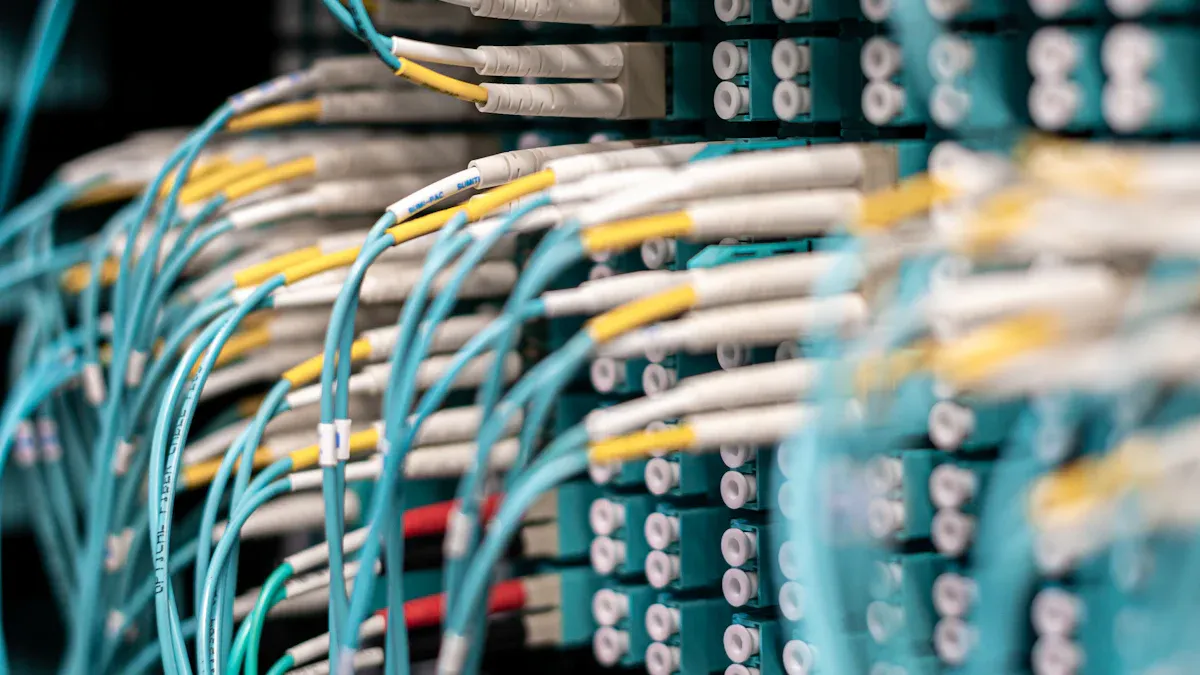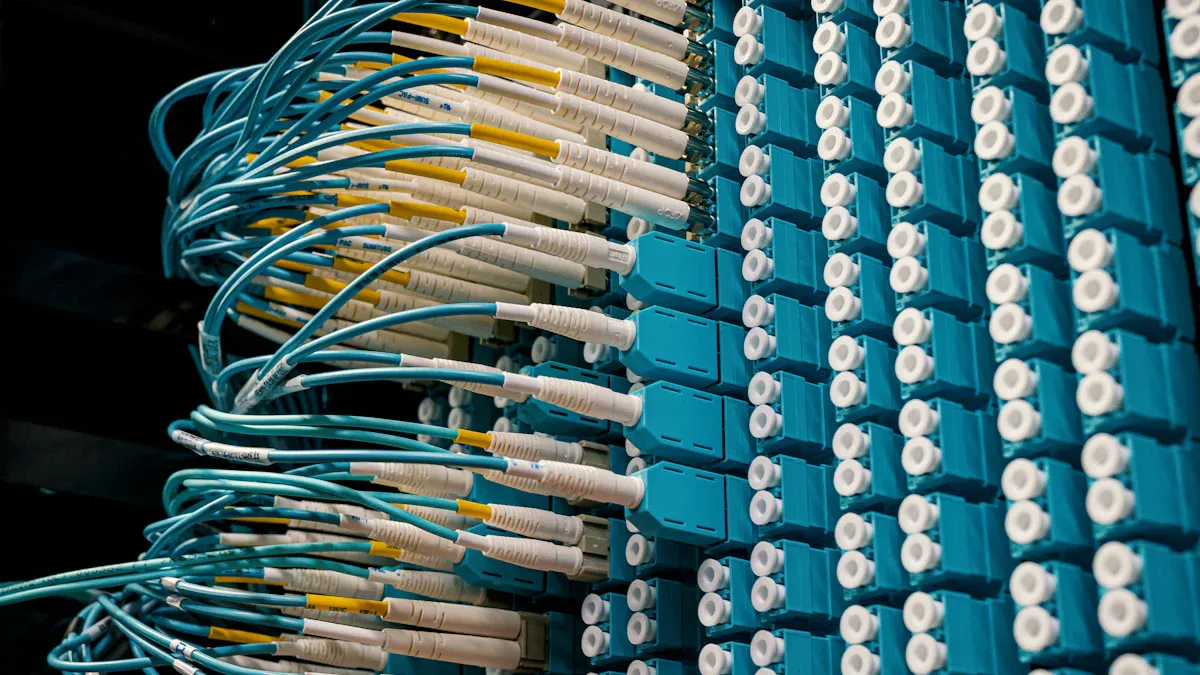Understanding the Role of Rectifiers in Telecom Cabinets

A rectifier is a tool that changes AC power into DC power. This change is important because most telecom equipment uses DC power to work. In telecom cabinets, rectifiers are key for giving steady DC power to important parts.
Rectifiers help keep telecom systems working well. They provide power without breaks, even during power changes or failures. This is important for keeping connections stable. Without rectifiers, telecom cabinets couldn't give the reliable service needed for smooth communication.
Key Takeaways
Rectifiers change AC power into DC power. This gives telecom equipment steady energy to work well.
Taking care of rectifiers often is very important. It stops problems and keeps telecom systems working smoothly.
New rectifiers save a lot of energy, with some being 98% efficient. This lowers energy use and costs.
Smart tools in rectifiers find problems early. This reduces downtime and makes systems work better.
New rectifier technology is eco-friendly and flexible. It uses renewable energy to work more efficiently.
What Are Rectifiers?

Definition and Purpose
A rectifier changes alternating current (AC) into direct current (DC). This is needed because telecom equipment uses DC power to work. Think of rectifiers as the backbone of telecom cabinets. They make sure equipment gets steady and reliable power. Even if AC power changes, rectifiers keep the output voltage stable. This stops service interruptions.
Rectifiers also help save energy. New designs aim to waste less energy. This lowers costs and helps the environment. By keeping DC power stable, rectifiers make telecom systems run better and more efficiently.
How Rectifiers Convert AC to DC
Turning AC into DC involves steps. First, diodes let current flow in one direction. This removes the alternating part of AC and creates a pulsing DC output. Capacitors smooth out the pulses, making steady DC voltage.
Full-wave rectifiers are often used in telecom cabinets. They turn both halves of the AC cycle into DC, making them more efficient. They give higher average voltage than half-wave rectifiers. Performance metrics like conversion ratio and ripple factor show how well the rectifier works. For example:
Metric | Description |
|---|---|
Conversion Ratio (η) | Compares DC output power to AC input power, showing efficiency. |
Ripple Factor | Shows how much the DC output voltage fluctuates, measuring quality. |
Transformer Utilization Factor (TUF) | Measures how well the transformer works during rectification. |
These metrics ensure rectifiers meet telecom system needs.
Common Components of a Rectifier
Rectifiers have parts that work together to give reliable DC power. Common parts include:
Rectifier Stage: Changes AC power into DC power for telecom devices.
DC-to-DC Converter: Keeps DC voltage steady, usually at 48V DC, and adds isolation.
Battery Backup System: Charges batteries to keep networks running during power outages.
Control and Monitoring Units: Manage power use and check performance for better efficiency.
Protective Devices: Protect the system with tools like Load Low Voltage Disconnects (LLVDs) and Battery Low Voltage Disconnects (BLVDs).
Modern rectifiers have new features like modular designs and smart monitoring. These make them easier to expand, more reliable, and simpler to maintain. Modular systems let you add power as needed. Smart monitoring helps fix problems quickly and keeps performance high.
The Role of Rectifiers in Telecom Cabinets

Powering DC-Based Telecom Equipment
Telecom cabinets use rectifiers to provide DC power to devices. Many telecom tools, like routers and switches, need DC power to work. Rectifiers give the right voltage and current for these devices.
Why is DC power used? DC power gives a steady energy flow. This is important for delicate telecom equipment. Rectifiers change AC power from the grid into DC power. This makes it usable for telecom cabinets. Without rectifiers, cabinets couldn’t give steady power for smooth operations.
Modern rectifiers have extra features like DC-to-DC converters. These parts adjust voltage to fit telecom device needs, usually 48V DC. This protects equipment from damage and improves system performance.
Ensuring Reliable and Stable Power Supply
Rectifiers help keep power steady for telecom cabinets. They fix changes in AC input, giving stable DC output. This is key because even small power breaks can harm communication networks.
Studies show rectifiers are efficient and reliable. For example:
Evidence Type | Description |
|---|---|
AC to DC Conversion | Rectifiers turn AC into DC, giving steady power and saving energy. |
Efficiency Studies | Research shows 380-V DC systems work better than AC ones, even with solar power. |
Reliability Analyses | Simulations prove DC systems are more reliable, helping telecom networks stay stable. |
These studies show rectifiers make telecom cabinets more reliable. They cut energy waste and ensure steady power, improving system efficiency.
Rectifiers also have monitoring tools to check power use and performance. These tools warn about problems early. Quick fixes prevent downtime. Monitoring keeps telecom cabinets running well, even in tough times.
Supporting Backup and Emergency Power Systems
Rectifiers are key for backup power in telecom cabinets. During outages, they work with batteries to keep networks running. They charge batteries when grid power is on and switch to them during outages.
This smooth switch keeps communication services working. For example, during disasters, rectifiers help telecom cabinets stay connected. This supports emergency responses.
Rectifiers also work with smart power systems. These systems save energy, extend battery life, and lower costs. By helping backup systems, rectifiers keep telecom cabinets working in emergencies, protecting communication networks.
Maintenance of Rectifiers in Telecom Cabinets
Why Regular Maintenance Matters
Taking care of rectifiers is very important. It helps telecom cabinets give steady power to devices. Without maintenance, rectifiers might stop working. This could cause communication problems. Checking them often finds worn-out parts early. Fixing these stops sudden failures. Cleaning and watching rectifiers keeps them working well. This ensures they give steady DC power.
Keeping records of maintenance is also helpful. It lets you plan future fixes better. Working with trained experts ensures proper care. They follow the best methods. The table below shows key maintenance tasks and why they matter:
Maintenance Task | Why It Matters |
|---|---|
Regular Checks | Stops problems early and avoids downtime. |
Cleaning and Watching | Keeps rectifiers working well and reliably. |
Keeping Records | Tracks past fixes and helps plan ahead. |
Working with Experts | Ensures proper care and follows the best methods. |
Best Maintenance Steps
Good maintenance keeps rectifiers running smoothly. Start by checking all parts like diodes and capacitors. Look for damage or wear. Clean the system to remove dust that can hurt performance.
Use tools to watch power use and spot problems. Train workers to handle rectifiers carefully. This avoids damage from mistakes. Always follow the maker’s rules for when and how to do maintenance.
Common Problems and Fixes
Rectifiers can have issues like getting too hot or voltage changes. Overheating happens if vents are blocked or dust builds up. Cleaning and checking often can stop this. Voltage changes might come from unstable AC power. Monitoring tools can find and fix this quickly.
If a rectifier stops giving power, check parts like diodes and capacitors. Replace broken parts right away. For big problems, call trained experts for help. Fixing issues early keeps telecom cabinets working well.
Advancements in Rectifier Technology
High-Efficiency Rectifiers for Telecom Cabinets
New rectifiers save energy and improve telecom cabinet performance. They convert power with over 96% efficiency, sometimes reaching 98%. This reduces energy waste and saves money. For example, 98% efficient rectifiers can save £9M in five years compared to 96% ones.
Hybrid systems using these rectifiers also show great results. One study showed 61.70% less fuel use than older generators. These improvements make high-efficiency rectifiers essential for saving money and energy in telecom systems.
Smart Power Management Integration
Smart systems are changing how rectifiers work in telecom cabinets. They use advanced tools like solar panels, wind systems, and energy storage. Each tool has a special job:
Component | Role |
|---|---|
Solar Panels | Collect sunlight and make energy efficiently. |
Wind Systems | Turn wind into DC power using rectifiers. |
Energy Storage | Saves extra energy for later use. |
These systems monitor and fix problems in real-time. This keeps equipment working well and reduces downtime. They improve efficiency and help telecom tools last longer.
Future Trends in Rectifier Technology
Rectifier technology is focusing on being eco-friendly and flexible. Companies now use greener materials and follow strict rules. Modular designs are popular, letting you add power as needed.
AI and IoT are also improving rectifiers. AI predicts problems early, avoiding failures. IoT tracks performance live, cutting waste and boosting reliability. Modern rectifiers also work well with renewable energy, reaching up to 95% efficiency.
These changes show how rectifiers are evolving. They keep telecom cabinets efficient, reliable, and better for the environment.
Rectifiers are important for telecom cabinets. They give steady DC power to equipment. They fix power changes to keep systems working well. Monitoring tools help find problems early. This reduces downtime and makes systems more efficient.
New rectifier designs are improving telecom systems. They save energy and work better with smart power tools. These upgrades make telecom cabinets greener and ready for future needs.
FAQ
What does a rectifier do in telecom cabinets?
A rectifier changes AC power into DC power. It gives steady energy to telecom devices for smooth operations. Without it, telecom systems would often stop working.
How do rectifiers help with battery backups?
Rectifiers charge batteries when power is normal. During outages, they switch to batteries to keep networks running. This quick change ensures communication stays active.
How can you check if the battery is working well?
You can use control units or diagnostic tools to check batteries. Regular checks find problems early and keep batteries ready for emergencies.
What are signs that a rectifier is failing?
Signs include overheating, voltage changes, or lower efficiency. Dust or broken parts often cause these problems. Regular care stops these issues and keeps rectifiers working.
Are new rectifiers good at saving energy?
Yes, modern rectifiers are up to 98% efficient. They save energy, cut costs, and work well with renewable power, making them eco-friendly.
See Also
Methods For Calculating Power Systems And Batteries In Telecom
Understanding The Distinction Between Wires And Cables In Telecom
An Overview Of The ESTEL Telecom Cabinet Power System
Design Specifications For ESTEL Telecommunication Cabinet Structures
CALL US DIRECTLY
86-13752765943
3A-8, SHUIWAN 1979 SQUARE (PHASE II), NO.111, TAIZI ROAD,SHUIWAN COMMUNITY, ZHAOSHANG STREET, NANSHAN DISTRICT, SHENZHEN, GUANGDONG, CHINA

